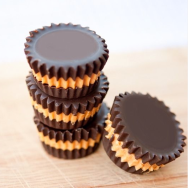*** Warning: this article does contain some graphic, yet interesting, images. Continue reading at your own fascination.
Vitamins, along with minerals, are an essential part of our diet and are the basic tools of nutrition. As a nutritionist and naturopath in training, knowing the function and roles of both types of vitamins are important. Especially when it comes to clinic consultations as clients symptoms can often present as a nutrient deficiency or toxicity.
The functions and actions of vitamins are also important in particular diseases or syndromes because some conditions need to avoid particular vitamins and foods. Eg- somebody with gallstones should avoid fat in their diet as they aggregate the gallbladder and cause further pain.
With that in mind, I thought it would be cool to breakdown vitamins, why they are important to include into our diet and where we can find them.
I plan on posting in 2 parts: fat soluble vitamins followed by water soluble vitamins. And maybe a minerals and metals post aswell… but for now, meet my (delicious) friends VITAMINS….
WHAT ARE VITAMINS?
Vitamins are essential micro-nutrients your body needs in small amounts. They are classified as either fat-soluble (A, D, E, K) or water-soluble (B’s, C) and are primarily obtained through a healthy diet of fresh fruits and vegetables, though they can be found in meat, fish and other animal derived foods.
TYPES/ FUNCTION/ DIETARY SOURCES
Fat-soluble Vitamins
- vitamins A, D, E, K (DEKA is an easy way to remember)
- needed in small amounts for normal function, growth and maintenance of body tissues
- found in plant and animal sources
- are not needed on a daily basis as they stay in the body for a longer period of time than WS vitamins, and any excess from consumption are stored in the liver and fatty tissues when not used
- mega doses can be toxic (hypervitaminosis) and cause health issues/complications
- can be lost if food is over cooked or stored incorrectly
ABSORPTION
Once ingested, fat-soluble vitamins travel to the stomach to be digested and then into the small intestine for further digestion. It is here where Bile (made in the liver, stored in the gallbladder) enters the small intestine to breakdown the fats. The nutrients are then absorbed by villi lining (they look like fingers) the small intesti ne walls, and enter lymph vessels (filter and transport fluid away from organs) into the blood stream, to be used for maintenance of body functions and energy. Once the body has used what it needs, excess vitamins are stored in the liver and fatty tissues until the body requires more, where they are released from the liver into the bloodstream to begin the cycle again.
ne walls, and enter lymph vessels (filter and transport fluid away from organs) into the blood stream, to be used for maintenance of body functions and energy. Once the body has used what it needs, excess vitamins are stored in the liver and fatty tissues until the body requires more, where they are released from the liver into the bloodstream to begin the cycle again.
VITAMIN A (Retinol): essential for healthy eye sight; regulation of immune health; repair and maintenance of cells; healthy skin, hair and nails; supports mucous membrane moistness for lungs, throat, mouth and nose; and acts as an antioxidant against free radicals
Dietary sources: dark green and yellow/orange vegetables and yellow fruits like mangoes, carrots, butternut squash, pumpkin, sweet potatoes; beef liver; eggs and butter.
Deficiency: protein malnutrition (kwashiorkor/marasmus), night blindness, broken fingernails, rough/dry skin, halted growth in children.
-

-
Vitamin A Deficiency: Marasmus (protein and energy malnutrition)
-

-
Vitamin A Deficiency: Kwashiorkor (protein malnutrition)
VITAMIN D: has a very important and crucial role utilizing and absorbing calcium and phosphate for healthy bones and function of nearly, if not all, body processes including immune health and cell growth. It also stimulates insulin production and is synthesised by the skin when exposed to sunlight, so make sure you are getting aleast 20 minutes outdoors!
Dietary sources: whole eggs, liver, salmon, milk including soy and almond, cheese, mushrooms,
Deficiency: poor immune health, muscle weakness, osteoarthritis and osteoporosis, rickets, malabsorption, weak bones, high blood pressure, increase change of infections, insomnia, poor detoxification and low stomach acid
-

-
Vitamin D Deficiency: Osteoarthritis
-

-
Vitamin D Deficiency: Rickets (bowing of the legs)
VITAMIN E: protects tissues and cells from oxidation (acts as an antioxidant), reduces inflammation, protects vitamin A in eyes from degenerating, immune booster, hormone regulator and is responsible for healthy and efficient blood circulation.
Dietary sources: green leafy vegetables; avocado; cod; shrimp; tofu; nuts, grains and legumes; wheat germ; spinach; sunflower seeds.
Deficiency: often associated with fat malabsorption and poor nerve conduction. low birth weight, stunted or slow growth in infants, age spots (also with age), cataracts (pupil become coloured), decreased sex drive, hair loss, slow wound healing, muscle weakness.
-

-
Vitamin E Deficiency: Age Spots
-
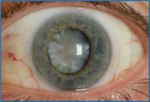
-
Vitamin E Deficiency: Cataract
VITAMIN K: primary role is to synthesize blood clotting formation to stop bleeding from open wounds; used to manage osteoporosis as it works together with calcium to promote healthy bone formation; and synthesis proteins found in the liver, bones and plasma for energy.
Dietary sources: broccoli, brussel sprouts and green leafy vegetables including spinach, kale, lettuce; organ meats like liver; eggs; diary products and cauliflower, bone broth.
Deficiency: often seen in infants. increased blood loss, caused by blood thinning medications such as warfarin, malabsorption, low bone density- osteoporosis, easy bruising, extremely heavy menstrual bleeding, frequent nose bleeds, bleeding gums.
-

-
Vitamin K Deficiency: Easy Bruising
-

-
Vitamin K Deficiency: Bleeding Gums
NOTE: For some people, supplements may need to be taken to correct nutrient inadequacy or improper nutrition. This, of course, should be approved by a health care professional to avoid any chance of over nutrition and toxicity.
Keep your eye out for Part 2: Water-Soluble Vitamin Breakdown: Functions + Sources on Instagram and Facebook.
Yours in health
Kaelli, x
instagram.com/bodyofnature
Facebook.com/BodyOfNatureNutrition





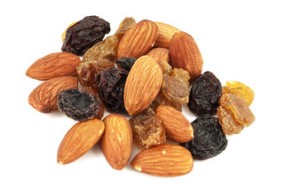


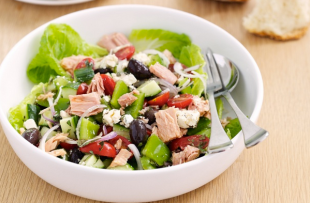
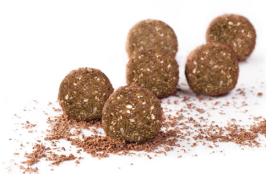

 ne walls, and enter lymph vessels (filter and transport fluid away from organs) into the blood stream, to be used for maintenance of body functions and energy. Once the body has used what it needs, excess vitamins are stored in the liver and fatty tissues until the body requires more, where they are released from the liver into the bloodstream to begin the cycle again.
ne walls, and enter lymph vessels (filter and transport fluid away from organs) into the blood stream, to be used for maintenance of body functions and energy. Once the body has used what it needs, excess vitamins are stored in the liver and fatty tissues until the body requires more, where they are released from the liver into the bloodstream to begin the cycle again.









